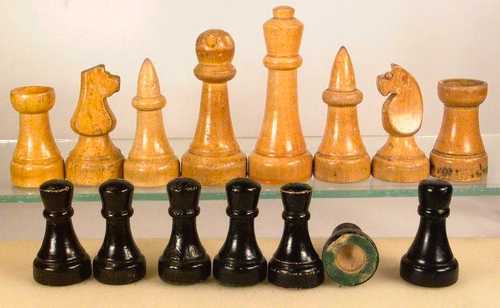
Posters Artwork Documents
Chess Nazis (1)
www.schachmuseum.ch
Just because their interest in moving little pieces of wood around a checkerboard (except for Hans Frank and Erich von Manstein, perhaps) was fairly limited, did not mean that the National Socialist authorities were inclined to miss any opportunity to garner good publicity from chess on the rare occasions when occasion offered. Early in the modern Olympic period, the practice developed of organising chess "Olympiad" tournaments in conjunction with the mainstream Games in Olympic years. This would have been Germany's gig in 1936, the occasion of the famous Berlin Olympiad. However, Germany's insistence on excluding Jewish players and enthusiasts from mainstream German chess clubs and events had already led to the withdrawal of the new, Nazified Greater German Chess Federation from the International Chess Federation (FIDE) so that an official Olympiad was impossible. What to do ? Well, the German Federation went ahead regardless, organising an "Olympiad" at Munich in August/September 1936. FIDE - in the way that they have always responded to "rebel" initiatives such as this - took no action to prevent this (it would have been ineffective in the chess environment and, anyway, they had no wish to alienate star German chess players whom they still invited to official tournaments). However, FIDE did not exactly make smooth the way; the FIDE-loyal British Chess Federation organised a major tournament that clashed directly with the German event, and that diverted many of the leading players from Munich. Nonetheless, the Munich event went ahead. One curious product of the Munich "Olympiad" was the development of a new pattern of chess pieces - the "Deutsches Bundesform" (German Federation Pattern) Pattern, illustrated above. Chess enthusiasts In Here will immediately recognise this as a simplified, somewhat brutalised version of what was then, and remains, the tournament standard "Staunton" pattern, dating from England in 1850. The new pattern was signalled in advanced by Dr Ehrhardt Post, Vice-President of the German Federation, in 1934. According to Post (a devoted National Socialist), "a new form of chessmen has been created according to my designs and indications, which supersedes all existing designs by far in aspect, durability and cheapness. Chess clubs are encouraged to gradually substitute the new designs for the earlier chessmen ...". The new pattern was promoted in the lead in the the Munich "Olympiad" and, of course, used in the tournament itself. It is amusing to reflect that, just as the efforts by its original manufacturers - Jacques of London (still going strong) - to obtain industrial designs protection ("design copyright") for the original Staunton design in 1850 failed, abysmally, to prevent widespread pirating of the pattern almost from word go, the same happened to Post and the German Federation's efforts to control use of the "Bundesform" design. While sets from approved manufacturers carry a design protection notice on boxes, it is clear that substantial numbers of sets were manufactured by "unofficial" traditional manufacturers, often on a cottage industry basis. Many of these pieces carry a greater or lesser degree of variation in form, in part at least to evade the design copyright. Pirating of the "Bundesform" pattern, ironically, was made easier by the simplification of the design, which made the process of turning and cutting the pieces easier. Leaves the question - is the "Bundesform" any good as a "working" chess piece ? Well, actually, the answer is "yes". The pieces are perfectly distinguishable in play, both in terms of colour and relative size. The only objection I am aware of is that, compared to the Staunton original, the "Bundesform" pieces can be a bit slippery to handle because of the elimination of much of the projection element in Staunton pieces. Perhaps this is why manufacturing of the "Bundesform" continued, at some level, after the war, in which period the design evolved further in the hands of a number of manufacturers. Modified "Bundesform" pieces continued to be manufactured in the German Democratic Republic up to 1960 at least; the last German manufacturer of which I am aware offered an updated version up to quite recently, but has now ceased manufacture. Best regards, JR. (I have drawn on a number of sources, but a particularly useful treatment occurs at www.schachmuseum.ch).
2338 Views
3/28/2013
